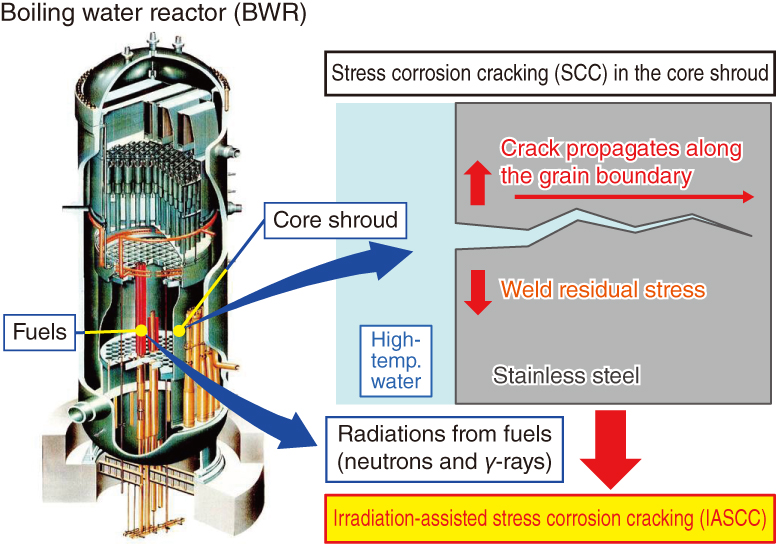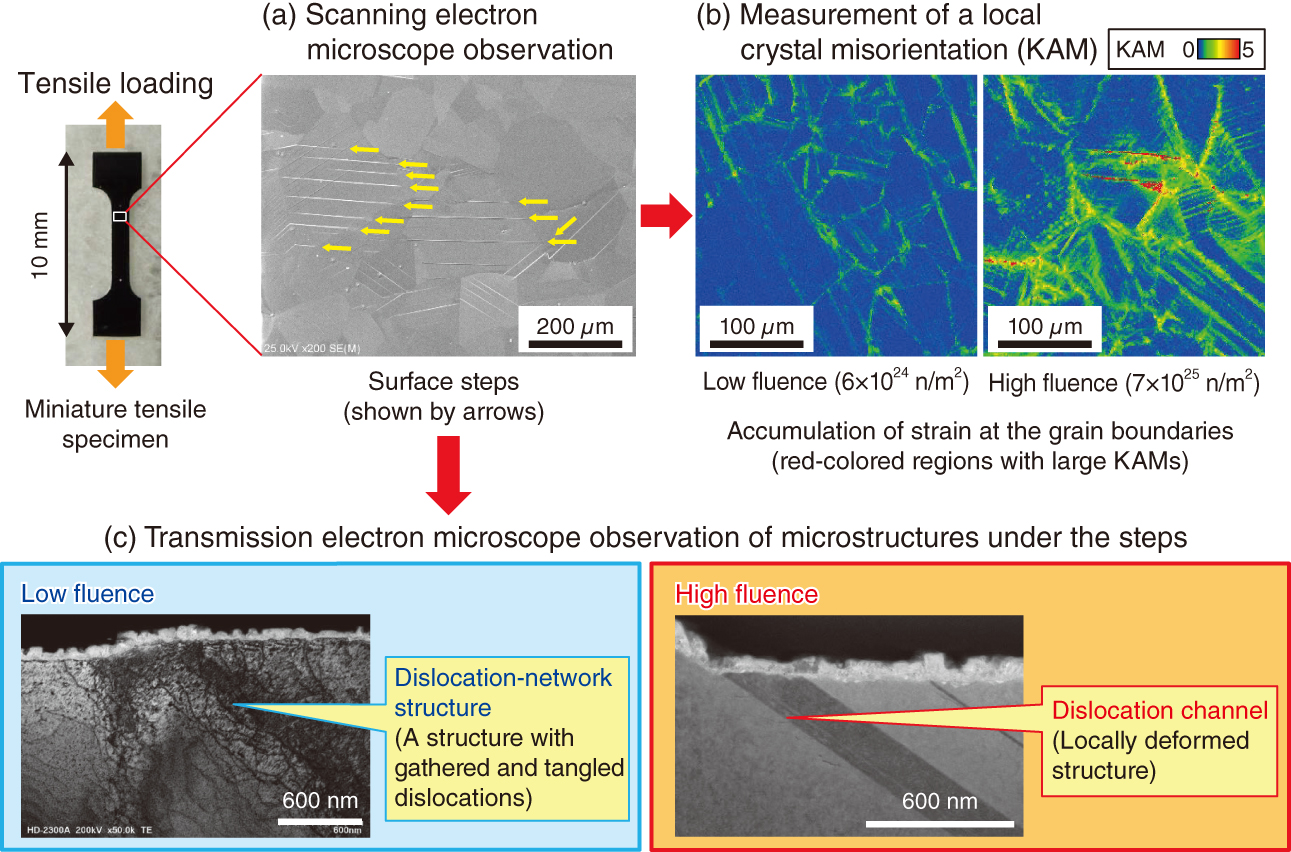
Fig.2-8 Irradiation-assisted stress corrosion cracking (IASCC) in the BWR core shroud

Fig.2-9 Deformed structures and strain distributions on the surfaces of irradiated stainless steels after applying plastic deformation
The core shroud of a boiling water reactor (BWR), which is a cylindrical reactor internal surrounding the fuel assembly, reliably supports the fuels during normal operation and serves to ensure the flow path of the water coolant. After long-term use of a core shroud with a structure composed of stainless steels connected by welding in high-temperature water in a reactor with weld residual stress, stress corrosion cracking (SCC), by which cracks propagate along the crystal grain boundaries, may occur. Moreover, as the core shroud is exposed to radiation such as neutrons and γ-rays generated from the fuels, increasing the neutron fluence to the material enhances the SCC and irradiation-assisted stress corrosion cracking (IASCC) may occur (Fig.2-8). Thus, complex factors such as materials, environment, stress, and irradiation are related to IASCC in the reactor internals, making it necessary to clarify the mechanism based on the knowledge obtained regarding each factor from test data.
To help clarify the IASCC mechanism by understanding the phenomena taking place at the crack tip, we performed a test to investigate the plastic deformation arising from the application of a load to neutron-irradiated stainless steels, focusing on the change in material properties with irradiation and stress. In the test, plastic deformation of around 2% (corresponding to the deformation at the crack tip) is applied by means of loading miniature tensile specimens fabricated from stainless steels irradiated up to around the maximum neutron fluence in the reactor internal of a BWR after 60 years of operation. Then, the deformed surface structure was observed using a scanning electron microscope. In addition, the local crystal misorientation (KAM), which indicates changes in the crystal orientation corresponding to the amount of plastic strain, was measured and the accumulation of local strain was quantitatively evaluated. As a result, linear surface steps appeared in the specimens by deformation, as shown in Fig.2-9(a). Moreover, as a result of detailed analysis of the relation between the distribution of KAM shown in Fig.2-9(b) and the crystal grains, we confirmed that KAM had a tendency to increase with an increase in the neutron fluence, especially at the grain boundaries. These results indicate that high strain is accumulated at the grain boundaries by deformation and that this effect is enhanced under higher fluence.
We selected a region near a grain boundary with a large KAM from each specimen and observed the cross-sectional microstructures under the surface steps using a transmission electron microscope. For the crystal grain under low fluence, a dislocation-network structure induced by deformation was observed just as in an unirradiated material, whereas under high fluence, a locally deformed structure called a dislocation channel was revealed (Fig.2-9(c)). From this result, we observed that localized deformation caused more remarkable surface steps attributed to the dislocation channels under higher fluence and that this was a cause of the accumulation of strain at the grain boundaries intersecting the surface steps. We will make good use of the knowledge obtained by the present study to further refine our evaluation of crack growth.
The present study was sponsored by the Secretariat of the Nuclear Regulation Authority (NRA), Japan.